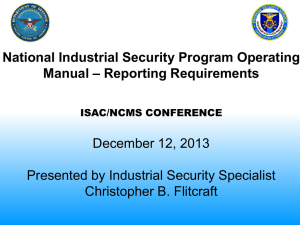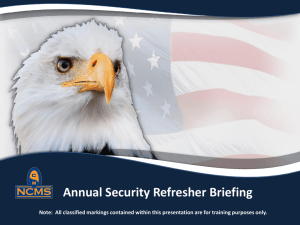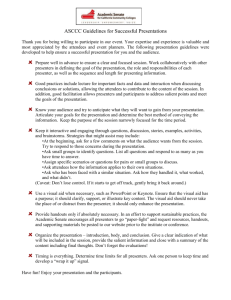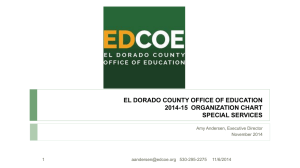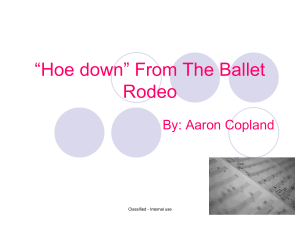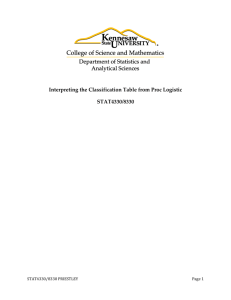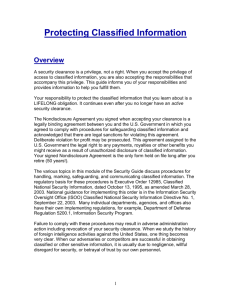Checklist for Hosting Classified Meetings
advertisement
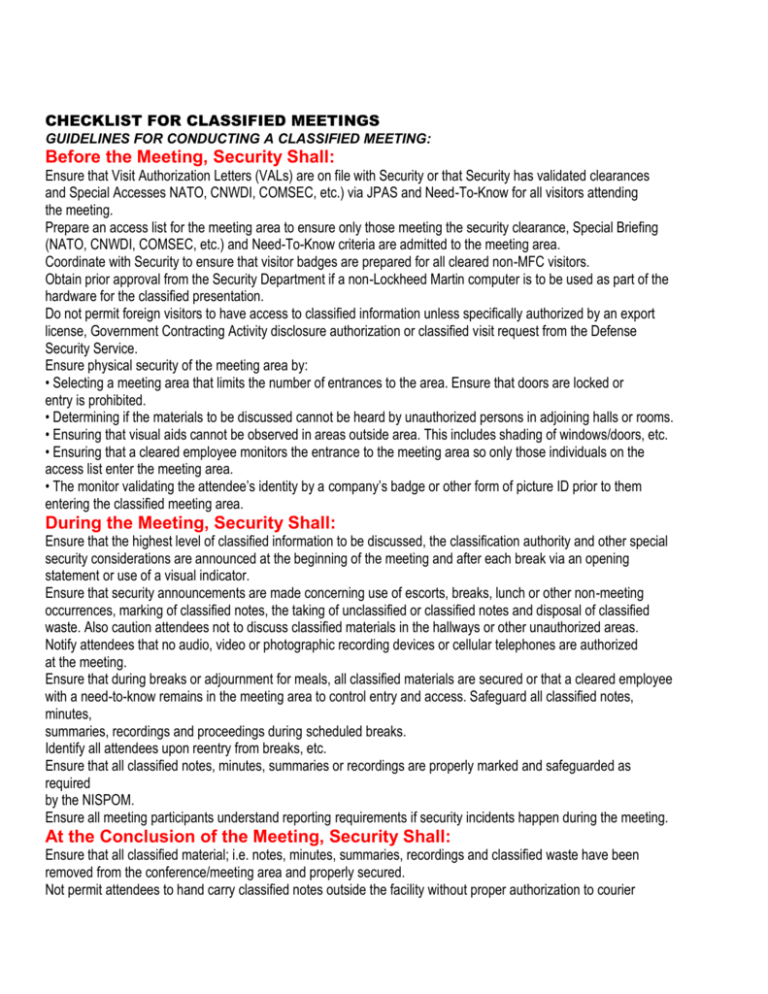
CHECKLIST FOR CLASSIFIED MEETINGS GUIDELINES FOR CONDUCTING A CLASSIFIED MEETING: Before the Meeting, Security Shall: Ensure that Visit Authorization Letters (VALs) are on file with Security or that Security has validated clearances and Special Accesses NATO, CNWDI, COMSEC, etc.) via JPAS and Need-To-Know for all visitors attending the meeting. Prepare an access list for the meeting area to ensure only those meeting the security clearance, Special Briefing (NATO, CNWDI, COMSEC, etc.) and Need-To-Know criteria are admitted to the meeting area. Coordinate with Security to ensure that visitor badges are prepared for all cleared non-MFC visitors. Obtain prior approval from the Security Department if a non-Lockheed Martin computer is to be used as part of the hardware for the classified presentation. Do not permit foreign visitors to have access to classified information unless specifically authorized by an export license, Government Contracting Activity disclosure authorization or classified visit request from the Defense Security Service. Ensure physical security of the meeting area by: • Selecting a meeting area that limits the number of entrances to the area. Ensure that doors are locked or entry is prohibited. • Determining if the materials to be discussed cannot be heard by unauthorized persons in adjoining halls or rooms. • Ensuring that visual aids cannot be observed in areas outside area. This includes shading of windows/doors, etc. • Ensuring that a cleared employee monitors the entrance to the meeting area so only those individuals on the access list enter the meeting area. • The monitor validating the attendee’s identity by a company’s badge or other form of picture ID prior to them entering the classified meeting area. During the Meeting, Security Shall: Ensure that the highest level of classified information to be discussed, the classification authority and other special security considerations are announced at the beginning of the meeting and after each break via an opening statement or use of a visual indicator. Ensure that security announcements are made concerning use of escorts, breaks, lunch or other non-meeting occurrences, marking of classified notes, the taking of unclassified or classified notes and disposal of classified waste. Also caution attendees not to discuss classified materials in the hallways or other unauthorized areas. Notify attendees that no audio, video or photographic recording devices or cellular telephones are authorized at the meeting. Ensure that during breaks or adjournment for meals, all classified materials are secured or that a cleared employee with a need-to-know remains in the meeting area to control entry and access. Safeguard all classified notes, minutes, summaries, recordings and proceedings during scheduled breaks. Identify all attendees upon reentry from breaks, etc. Ensure that all classified notes, minutes, summaries or recordings are properly marked and safeguarded as required by the NISPOM. Ensure all meeting participants understand reporting requirements if security incidents happen during the meeting. At the Conclusion of the Meeting, Security Shall: Ensure that all classified material; i.e. notes, minutes, summaries, recordings and classified waste have been removed from the conference/meeting area and properly secured. Not permit attendees to hand carry classified notes outside the facility without proper authorization to courier classified material. Ensure that classified material is sent in accordance with the NISPOM and only to those cleared attendees whose facilities have an approved classified safeguard capability and have demonstrated the need-to-know to retain the materials. Review the classified meeting process and report any lessons learned to the Facility Security Officer
